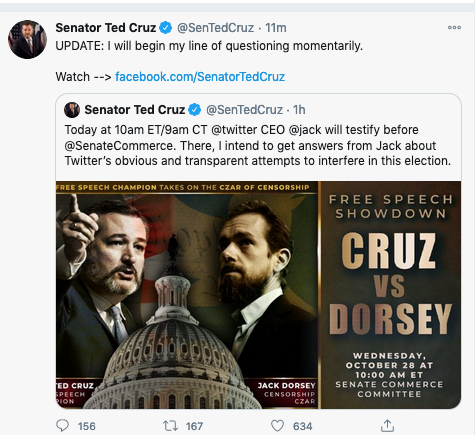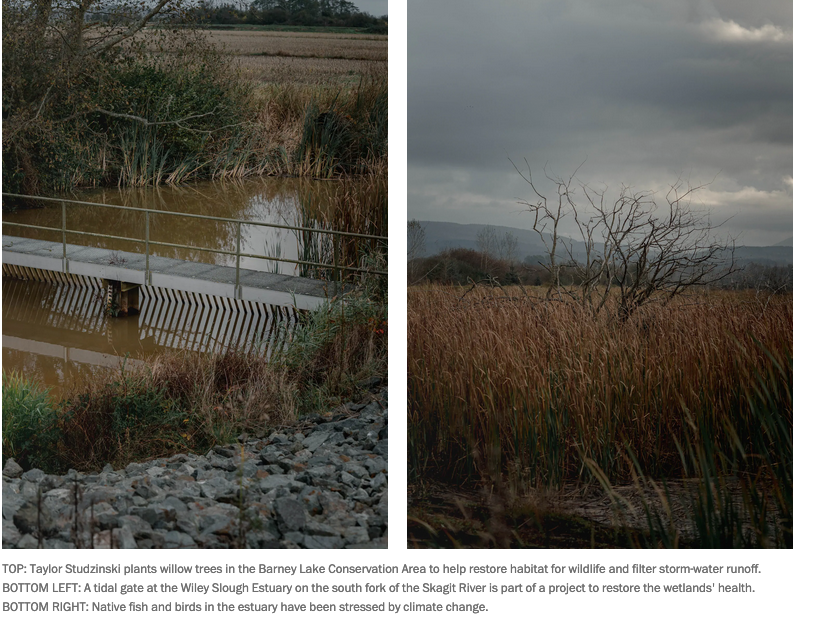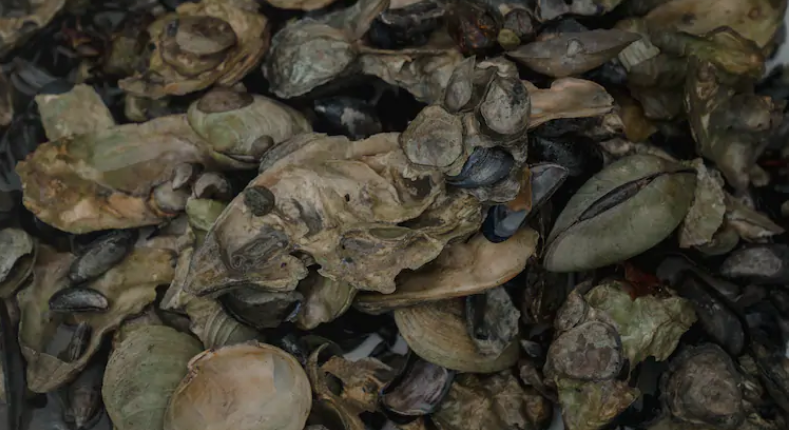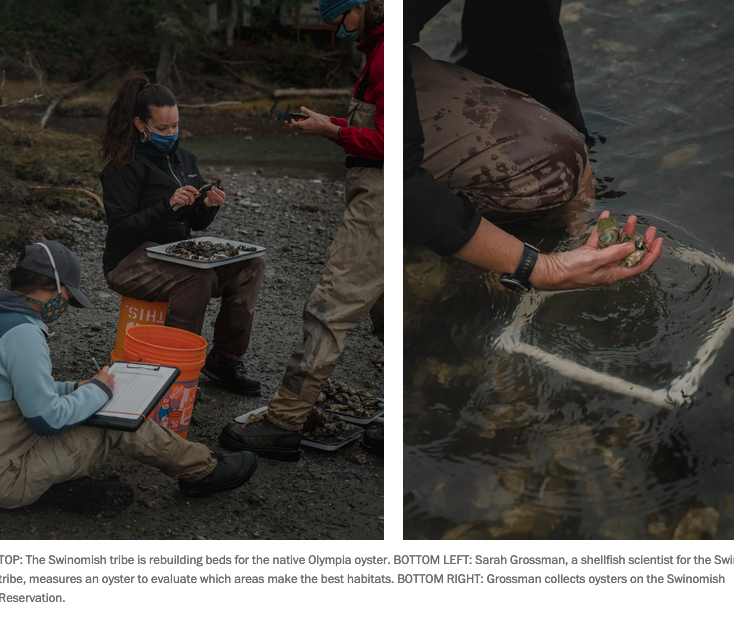A post was merged into an existing topic: US in crisis - Black Lives Matter Fallout - National and local responses
Jack Burkman and Jacob Wohl Indicted AGAIN Over Voter Intimidation
The pro-Trump duo are in trouble with the law, yet again.
Conservative operatives Jacob Wohl and Jack Burkman have been indicted in Ohio, once more over a racist robocall aimed at minority voters.
Wohl and Burkman, who rose to some level of infamy online for blundering attempts to manufacture sexual assault allegations against Democratic politicians and other Trump foes, have each been charged in Ohio’s Cuyahoga County with eight counts of telecommunications fraud and seven counts of bribery, a charge that includes attempts to convince people not to cast ballots. The indictment only adds to the growing mountain of criminal and civil problems facing the notorious pro-Trump pair.
In late August, a robocall that claimed to come from Wohl and Burkman warned voters not to use mail-in ballots, falsely claiming that the ballot information would be used to enforce vaccine mandates and collect on credit card debts. In the call, which was sent to 67,000 voters in the Midwest, according to prosecutors, a Black woman warned potential voters not to send in mail-in ballots or risk being fooled by “the man.”
“The right to vote is the most fundamental component of our nation’s democracy,” Cuyahoga County Prosecutor Michael C. O’Malley said in a statement. “These individuals clearly infringed upon that right in a blatant attempt to suppress votes and undermine the integrity of this election These actions will not be tolerated.”
Michigan’s attorney general charged Wohl and Burkman in a separate case on Oct. 1 for the same robocall, which was also sent to voters in that state. They have also been sued in New York in a civil lawsuit by people who received the call.
Wohl, 22, and Burkman, 54, didn’t respond to an immediate request for comment.
The pair have claimed they didn’t arrange the robocall. In the Michigan case, however, prosecutors intend to call as a witness the owner of a robocall company who prosecutors say will testify that his company was used by Burkman and Wohl to send the robocalls. Michigan prosecutors have also claimed they have an email from Wohl arranging the robocall’s scripts.
Wohl is also facing felony charges in California over alleged violations of securities laws. And the FBI is investigating the pair over the leak of juror questionnaires in the trial of former Trump adviser Roger Stone, according to sealed court documents obtained by The Daily Beast.
Watch the Big Tech Hearings in front of Senate Commerce Committee - 10/28/20 Live
Senate Democrats and Republicans grilled the chief executives of Facebook, Google and Twitter on Wednesday at a highly partisan, wide-ranging review of their content-moderation practices less than a week before Election Day.
Lawmakers on the Senate Commerce Committee are convening the gathering chiefly to discuss a controversial, decades-old law known as Section 230 that spares social media sites from being held liable for the way they police their platforms.
But the hearing is a public trial of sorts for Facebook’s Mark Zuckerberg, Google’s Sundar Pichai and Twitter’s Jack Dorsey, who appeared virtually and faced tough questions about the way they have handled hate speech, extremist content and election disinformation, including the most controversial online comments from President Trump.
From Washington Post
Here are the moments to watch for:
- Republicans on the panel, led by Chairman Roger Wicker (Miss.), pressed the tech giants over allegations that they systematically censor conservatives online — a charge for which lawmakers historically have provided little evidence and one that the tech giants deny.
- Many GOP lawmakers have criticized the tech giants for the way they handled an article this month published by the New York Post about Joe Biden’s son Hunter. Facebook and Twitter limited the spread of the article — with Twitter initially blocking links outright before relenting — out of concern about the origins of the information.
- Democratic lawmakers are expected to question the three tech executives about their efforts to stop the spread of viral disinformation. They see the censorship allegations as an attempt to cow Silicon Valley at a time when tech giants have taken a more active role in taking down harmful content, including tweets and other posts from Trump.
- With no limit to what lawmakers may ask, there may be other uncomfortable questions. The U.S. government last week filed antitrust charges against Google, for example, and Pichai’s testimony on Wednesday marks the first opportunity for members of Congress to ask him about allegations that the search giant violated federal competition law. Similar charges are expected against Facebook as soon as November, putting Zuckerberg on a similar hot seat.
As per usual R’s are going after twitter over the Hunter Biden story in the NY Post. And Jack Dorsey responds with the fact that the NY Post used ‘hacked materials’
And Sen Cruz of course is going to town on this…and setting it up in HIS TWITTER feed as a fight of the century type of exchange…FFS
video of Sen Ted Cruz spewing
video of Sen Ted Cruz spewing
And Dem Sen Schatz (D-HI) is coming after the GOP for their" hit job" - he’s talked w/ Politico about this prior to his testimony
About time.
Labour Party Suspends Jeremy Corbyn Over Anti-Semitism Response
A long-awaited official report strongly criticized Britain’s main opposition party, which Mr. Corbyn once led. His reply to the findings prompted his suspension.
Taiwan’s military includes same-sex couples in wedding for first time
Two lesbian couples have become the first to take part in a mass military wedding in Taiwan, the only place in Asia to have legalised gay marriage.
One more reason to win back the Senate. Come on Georgia!
Puerto Ricans have voted in favor of statehood. Now it’s up to Congress.
PS: I was born in Puerto Rico, a navy brat, so I would LOVE to see this be a thing.
From the newly elected Senator of Alabama
Holy moly. Rumors are flying that Putin is quitting soon and may have Parkinson’s. He’s been showing major signs of pain and issues and recent legislation to make him a “senator for life” when he resigns are causing speculation!
PUTIN ‘TO QUIT’
Vladimir Putin, 68, ‘set to resign as Russian president early next year amid fears he has Parkinson’s’
VLADIMIR Putin is planning to quit early next year amid growing fears for his health, Moscow sources claimed last night.
Kremlin watchers said recent tell-tale footage showed the 68-year-old strongman has possible symptoms of Parkinson’s Disease.
And informed analysts claimed that the Russian president’s glamorous ex-gymnast lover Alina Kabaeva, 37, is begging him to release his grip on power.
Observers who studied recent footage of Putin noted his legs appeared to be in constant motion and he looked to be in pain while clutching the armrest of a chair.
His fingers are also seen to be twitching as he held a pen and gripped a cup believed to contain a cocktail of painkillers.
Speculation that his 20-year-reign - second only to that of Stalin - could be nearing an end grew earlier this week when laws were drafted to make him a senator-for-life when he resigns.
Legislation introduced by Putin himself was being rushed through parliament to guarantee him legal immunity from prosecution and state perks until he dies.
Moscow political scientist Professor Valery Solovei fuelled further speculation last night by suggesting Putin may have symptoms of Parkinson’s.
The academic said he also understood Putin’s undisclosed partner Alina was pressuring him to quit - along with his daughters Maria Vorontsova , 35, Katerina Tikhonova, 34.
Solovei said: "There is a family, it has a great influence on him. He intends to make public his handover plans in January”.
The professor predicted that Putin would soon appoint a new prime minister who would be groomed to become his eventual successor.
The president’s staff have repeatedly played down rumours that he is paving the way for a political exit.
And Putin himself has regularly released pictures of him looking fit and toned in Action Man poses hunting, shooting, horse riding and playing ice hockey.
His spokesman Dmitry Peskov said of the senator-for-life move: : "This is the practice that is being applied in many countries of the world, and it is quite justified.
“This is not innovation from the point of view of international practice.”
I am glad Vindman is there - writing a book and supported by an honorable grant supporting the military.
And in another election…
It can’t fly and it hides during the day but a critically endangered large parrot is back in the limelight having been named New Zealand’s bird of the year for an unprecedented second time.
The green and fawn kākāpō – the world’s heaviest, longest-living parrot – first won in 2008. After conservation efforts, the population of this large parrot has risen from 50 during the 1990s to 213 now.
Kākāpō – a bird also known as “mighty moss chicken” – used to live throughout Aotearoa, but today survive only on predator-free islands.
Another endangered bird, the antipodean albatross, which is often caught in fishing nets, won most first-choice votes out of the more than 55,000 votes cast but under the competition’s preferential system the kākāpō came through. Organisers said they hoped the antipodean albatross did not feel robbed.
The world’s most famous Kākāpō is Sirocco, who reputedly thinks he is human after a respiratory illness meant he became the first male to be hand reared.
Aged 23 – scientists believe kākāpō can live for around 60 years – Sirocco has toured New Zealand to promote the plight of his species. In 2009, he rocketed to global fame after attempting to mate with zoologist Mark Carwardine’s head during filming for the BBC documentary Last Chance to See with British actor Stephen Fry, who likened the bird’s face to that of a Victorian gentleman. The video of the incident – with commentary from Fry: “He’s really going for it!” – has had more than 18m views.
No stranger to scandal, the competition this year involved the endorsement by an adult toy store of the polyamorous hihi, or stitchbird, and voter fraud. Volunteer scrutineers found 1,500 votes cast one night were from the same IP address, all for the smallest kiwi species, the kiwi pukupuku or little spotted kiwi.
Some of our birds are now twittering that it was a rigged election!
Some good news to be thankful for:
I really want to read that because I could use some news like that, but paywall 
Not sure how to copy the whole article.
@Whoosie I am putting it in  …all you do is highlight sections of the article, and paste it into the body of an entry. You can copy photos too. Then you need to use the Quote (") symbol - highlight article and click (") from the above edit bar.
…all you do is highlight sections of the article, and paste it into the body of an entry. You can copy photos too. Then you need to use the Quote (") symbol - highlight article and click (") from the above edit bar.
@celena here you go.
For 10,000 years, the Swinomish tribe has fished the waters of northwestern Washington, relying on the bounty of salmon and shellfish not only as a staple of its diet but as a centerpiece of its culture. At the beginning of the fishing season, the tribe gathers on the beach for a First Salmon ceremony, a feast honoring the return of the migratory fish that binds the generations of a tribe that calls itself the People of the Salmon.
At the ceremony’s conclusion, single salmon are ferried by boat in four directions — north to Padilla Bay, east to the Skagit River, south to Skagit Bay and west to Deception Pass — and eased into the water with a prayer that they will tell other salmon how well they were treated.
In recent years, though, the tribe’s harvest, diminished by vanishing habitat and warming waters fueled by climate change, hasn’t been sufficient to feed the hundreds of people who come to pay homage to their ancestors and to the fish that sustained them.
“We don’t have that abundance anymore,” said Lorraine Loomis, an elder who has managed the tribal fishery for 40 years. “To get ceremonial fish, we buy it and freeze it.”
For the Swinomish, perched on a vulnerable, low-lying reservation on Fidalgo Island, the effects of a warming world have been a gut punch.
LEFT: A carving represents a legend linking native people and the sea, at Deception Pass State Park on Fidalgo Island, Wash. RIGHT: Waves crash on Rosario Beach at Deception Pass State Park.
The tribe has responded with an ambitious, multipronged strategy to battle climate change and improve the health of the land and the water and the plants, animals and people who thrived in harmony for generations. In 2010, the Swinomish became one of the first communities to assess the problems posed by a warming planet and enact a climate action plan. An additional 50 Native American tribes have followed, creating climate strategies to protect their lands and cultures, ahead of most U.S. communities.
The Swinomish see the tasks beyond addressing shoreline risk and restoring habitats. They look at climate adaptation and resilience with the eyes of countless generations. They recognize that the endangered “first foods” — clams, oysters, elk, traditional plants and salmon — are not mere resources to be consumed. They are central to their values, beliefs and practices and, therefore, to their spiritual, cultural and community well-being.
Loomis is 80. Every member of her family, from her grandfather to her nine great-grandchildren, has fished the tribe’s ancestral waters. She has watched over the decades as the salmon disappeared and her family turned to crab, geoduck and sea cucumbers. She’s seen the salmon season drop to only a few days per species from the eight months — May through December — of decades past in order to protect populations. The Skagit River is the last waterway in the United States that’s home to all five species of Pacific salmon.
Progress has been slow; some researchers say it could be 90 years before the salmon recover. Loomis is taking the long view. “If I didn’t believe we would recover [the fishery], I guess I wouldn’t still be working on this,” she said.
In recent years, the tribe has fostered salmon recovery through a variety of projects. It has restored tidelands and channels, planted trees along streambeds to cool warming waters, and collaborated with farmers to increase stream setbacks to improve water quality.
Restoring salmon populations is just part of an ambitious climate action plan to blunt the effects of increased flooding, ocean acidification, rising river temperatures, more-destructive storms and habitat loss.
The Swinomish are rebuilding oyster reefs for the native Olympia oyster. They’re planning the first modern clam garden in the United States on the reservation’s tidelands, reviving an ancient practice. They’re monitoring deer and elk populations through camera traps to understand the climate change pressures and to inform hunting limits. And they have ongoing wetland restoration projects to explore preserving native plants and to help naturally manage coastal flooding.
“They’re doing really innovative climate adaptation,” said Meade Krosby, a senior scientist with the Climate Impacts Group at the University of Washington. “They were way ahead of the curve. And that really shouldn’t be surprising, because the tribes have shown tremendous leadership in climate adaptation and mitigation.”
While the Swinomish have been pioneers, they are among an increasing number of Indigenous communities across the country that have created climate plans guided by science and culture.
The Tulalip tribes, neighbors to the south, are relocating nuisance beavers from urban areas to streams with salmon to improve water quality and lower the temperature, reduce sediment flowing into streams and mitigate the effects of increasingly intense storms. The Karuk tribe of Northern California has a 232-page plan that calls for prescribed burning to reduce increasing wildfires and removing dams to help decreasing salmon and eel populations.
The Confederated Salish and Kootenai tribes of Montana have a resilience plan that calls for prescribed burns and restoring whitebark pine, a key part of tribal culture. They plan to identify trees resilient to blister rust — a fungus exacerbated by climate change — collect their seeds and eventually plant 100,000 seedlings on their lands.
And in Alaska, a partnership of 11 tribes has formed to identify harmful algae blooms so that it’s clear when shellfish can be safely harvested.
Native Americans acutely feel the effects of the changing climate because they were forced onto the most vulnerable lands, places that were of little use to others, said Nikki Cooley, co-manager of the Tribes and Climate Change Program for the Institute for Tribal Environmental Professionals.
“There’s that big push to address climate change because we’re feeling the effects more so than other places,” said Cooley, 40, who grew up without electricity or running water, herding sheep in the sprawling Navajo Nation reservations of the Arizona desert.
The institute has consulted with more than 300 of the 574 tribes in the United States, Cooley said. It’s natural that Indigenous people who have lived with the land for generations, attuned to the cycles of nature, would be leaders in adapting to climate change and marrying that to culture and health. “We’ve always been taught and are still being told we have to preserve for the future generations,” she added.
‘A symbiotic respect’
An 1855 treaty established the Swinomish Reservation, a 15-square-mile skinny rectangle on Fidalgo Island with 2,900 acres of tidelands and 7,450 acres of uplands. The tribe, which has about 1,000 members, owns a casino, an RV park and a golf course on the island 80 miles north of Seattle. It leases 420 acres of the reservation to a planned community of 2,000 people.
The hydrology of the area has been radically altered over a century, destroying critical habitat for fish and wildlife. For example, the Swinomish Channel, once a complex waterway on the eastern edge of the reservation, was dredged and 900 acres of tidelands were diked and drained in 1937, blocking the way for young salmon to reach the tidal channels critical to their development as places to feed, grow and rest.
In early 2006, a 100-year storm struck the island, causing damaging flooding. Later that year, another storm downed trees and power lines, isolating the residents and causing evacuations. Those extreme weather events helped spur the tribe to examine a future imperiled by climate change.
Their plans merge traditional and academic resources. When looking at ways to protect wetlands, Todd Mitchell, the tribe’s director of environmental protection, discovered that knowledge about traditional plantings passed down through the generations was lost. So he turned to the University of Washington, which had archived notes by ethnographers and anthropologists who had interviewed tribe elders in the 1950s and 1960s.
A tribal member who earned a geology degree from Dartmouth College and a master’s degree at Washington State University, Mitchell returned to work for the tribe 20 years ago. “I think the missing piece — and I’ve been working on it ever since I got here — is how to take this straight-up science in the academic sense and put it together with traditional knowledge.”
One way the tribe’s approach differs from others is an innovative focus on community health. While the health effects of a changing climate have become a focus in recent years, the Swinomish, typically, have developed a broader view.
Jamie Donatuto, the tribe’s environmental health officer, and Larry Campbell, a 71-year-old tribal elder, have created a tool, Indigenous Health Indicators, that goes beyond typical morbidity and mortality measures and considers ecosystem health, social and cultural beliefs, and values integral to a community. “It’s a very different way of thinking about health,” she said.
Seen through that lens, restoring “first foods” is important not just for diet and nutrition but for nourishment of the soul. Living somewhere for a long time fosters a sense of place, and a sense of place fosters stewardship.
“It’s a different worldview,” said Donatuto, who has a doctorate in resource management and environmental sustainability from the University of British Columbia. “The salmon and the crabs and the clams are relatives. They’re living relatives. They’re not just resources. And so you treat them with a symbiotic respect. They feed you because you take care of them. It’s a very different way of thinking about why these areas are important.”
Donatuto and Campbell have created an index of six health indicators: cultural use, community connection, self-determination, resiliency, transferring traditional knowledge across generations, and natural resource security.
“We believe that if we can go back to the foundation of our teachings, the foundation of what our elders knew, that it would help us in the long run,” Campbell said, adding that merging traditional knowledge with Western science is “the best of both worlds.”
Plans for the clam garden exemplify the intersection of community health and climate adaptation. Donatuto and Campbell surveyed tribal members about three possible sites on the west side of the reservation. They discovered that one, which had been returned to the tribe after years in private hands, had a meaningful history. Elders told stories about growing up playing on the beach all day. It had been a popular clam-digging spot and place to net fish from the beach. But for years, members had been chased off the tidelands by the property owners.
Creating the garden at that spot would not only provide first foods — including the return of native littleneck clams that were once a Swinomish staple — but symbolize community health.
The Swinomish tribe’s pioneering climate action plan was designed with many generations in mind.
A clam garden requires tribal members to work together to build and maintain a low rock wall at the shoreline. Once in place, the garden will create a spot for elders to share stories, passing on tribal knowledge. It will supply a first food while serving as an example of the tribe’s resilience, self-determination and cultural stewardship, all health indicators.
Krosby said the tribe’s outreach is a lesson. “When we engage communities and when we incorporate their knowledge and concerns into climate planning, you wind up with a more equitable and robust outcome,” she said. “You wind up with the backing of the community. You end up with the benefit of their knowledge and expertise. And that’s especially important for front-line communities.”
Mitchell and Shelly Vendiola, a tribal elder, are chairs of the Protect Mother Earth Committee, working on involving the community in the plan’s update and creating a climate change curriculum for schoolchildren and adults that marries an introduction to tribal lore with climate science.
The idea is to interest members in exploring science, going away to study and perhaps returning to help develop and implement future climate adaptation.
“Climate change,” Mitchell said, “is going to last for a long time. So what we set up now builds the foundation.”
Consider it newly traditional knowledge to pass down across the generations.
Poke me next time, I have a WaPo subscription, and I know how to get around the NYT paywall.
I really ought to subscribe to WaPo. What made you decide to go for it?
Well, while my wife and I are highly impressed with the reporting from both the NYT and WaPo, the NYT has a severe issue with its editorial department consistently putting out offensive, idiotic editorials (though it does have some really good ones also.) You get a little of that at WaPo, but MUCH less; it’s usually only from guest writers, not their main crew, and I feel their editorial department, and upper echelon, fall much more in line with our views, enough so that we feel we can support them with a subscription. At the time, too, we weren’t as financially stable as we are now but we were doing okay for ourselves finally after a long time of scraping by, and we found we were often reading WaPo articles and wanted to keep on top of what is happening in the White House and elsewhere in our current mad state of affairs.
One of the reasons I’ve started to consider a subscription more seriously is that (before my free views were up) their headlines seemed the least overtly sensationalized, but more importantly, actually representative of the contents of the articles themselves. I really appreciate that. I can’t really say the same for many other major publications, and they somehow make everything more of a slog because simple clickbait is the worst. I think so few people read the whole article that the false pretenses have been damaging overall.
Since you’ve had more time with it, I was wondering if that was your experience with it or if it’s just the things I’ve happened to look at.


 Coronavirus (Community Thread)
Coronavirus (Community Thread)







